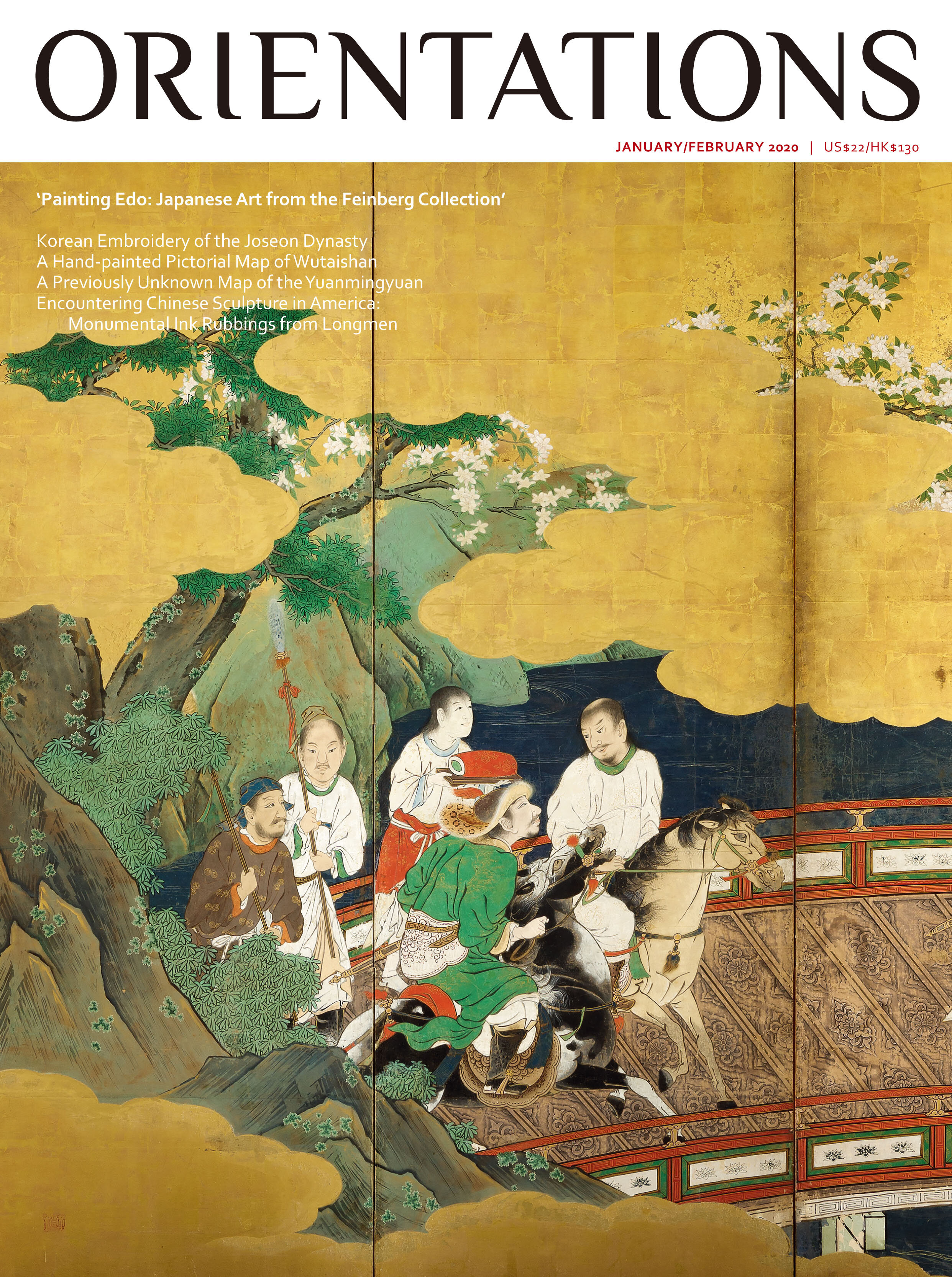JAN/FEB 2020
VOLUME 51 - NUMBER 1
It is one of the hallmarks of Orientations to work closely with museums to highlight their collections and special exhibitions. Thus, our January/February 2020 issue presents articles on several museum shows taking place this spring, from ‘Painting Edo’ at the Harvard Art Museums to ‘Golden Needles: Embroidery Arts from Korea’ at The Cleveland Museum of Art.
Over the years, museums have had to evolve to meet new challenges. Symposiums that gather museum professionals to exchange ideas are important platforms. One such event, the Museum Summit 2019, organized by Hong Kong’s Leisure and Cultural Services Department in partnership with The British Museum, took place in Hong Kong this November with the theme ‘Formation and Transformation’. Over thirty speakers from around the world presented at the symposium, which saw close to 1,000 registrants. One of the speakers, Ruth Berson, former deputy museum director, curatorial affairs of the San Francisco Museum of Modern Art, highlighted a new museum definition adopted by the International Council of Museums (ICOM) in 2019 to better reflect the challenges museums face today. ICOM’s 2007 definition was as follows:
A museum is a non-profit, permanent institution in the service of society and its development, open to the public, which acquires, conserves, researches, communicates and exhibits the tangible and intangible heritage of humanity and its environment for the purposes of education, study and enjoyment.
Its 2019 definition is:
Museums are democratising, inclusive and polyphonic spaces for critical dialogue about the pasts and the futures. Acknowledging and addressing the conflicts and challenges of the present, they hold artefacts and specimens in trust for society, safeguard diverse memories for future generations and guarantee equal rights and equal access to heritage for all people.
Museums are not for profit. They are participatory and transparent, and work in active partnership with and for diverse communities to collect, preserve, research, interpret, exhibit, and enhance understandings of the world, aiming to contribute to human dignity and social justice, global equality and planetary wellbeing.
This broader and more inclusive definition, which holds museums to greater accountability, resonates with topics that recurred during the summit, such as ensuring that a greater number of peoples and cultures are represented in a collection, placing the history of a particular place in a wider global context, and more deeply engaging with visitors and the local community.
Museums have already taken measures to achieve such goals. One example is the Contemporary and Modern Art Perspectives (C-MAP), launched by The Museum of Modern Art in New York and consisting of four groups of staff members across departments that study the arts of Asia, Central and Eastern Europe, Africa and Latin America—regions previously under-represented in the museum collection and programmes. In addition to inviting curators, scholars and artists to New York, the groups travel to the
region they are studying at least once a year. This has resulted in the creation of many exhibitions and the acquisition of over 1,400 artworks for the museum.
With the broadening of museum collections, the building of new museums and the renovation and expansion of existing institutions, this is an exciting time to be visiting museums.
FEATURES
Rachel Saunders. Painting Edo: Japanese Art from the Feinberg Collection
Yukio Lippit. From Kiso to Kijin: Reconsidering Eccentricity in Edo Painting
Wai Yee Chiong. A Medley of Brushes: Collaborative Paintings in the Feinberg Collection
Sooa Im McCormick. Women in Asian Art - Stitches Empowered: Korean Embroidery Arts from the Joseon Dynasty
Diana Lange. Thoughts on a Hand-painted Pictorial Map of Wutaishan at the Museum am Rothenbaum in Hamburg
John R. Finlay. A Previously Unknown Map of the Yuanmingyuan
Fletcher Coleman. Encountering Chinese Sculpture in America: The Early Pedagogy and Exhibition of Monumental Ink Rubbings from Longmen
REVIEWS
Piers Masterson. 'Living with Ink: The Collection of Dr Tan Tsze Chor'
Insoo Cho. Arts of Korea: Histories, Challenges, and Perspectives
INTERVIEWS
Yukio Lippit. An Interview with Japanese Painting Collectors Robert and Betsy Feinberg
CURATOR’S CHOICE
Shawn Eichman. Saints and Sinners: Divine Sculpture

